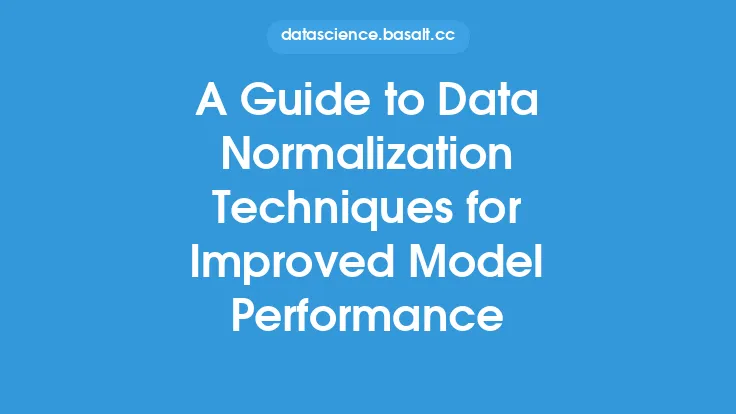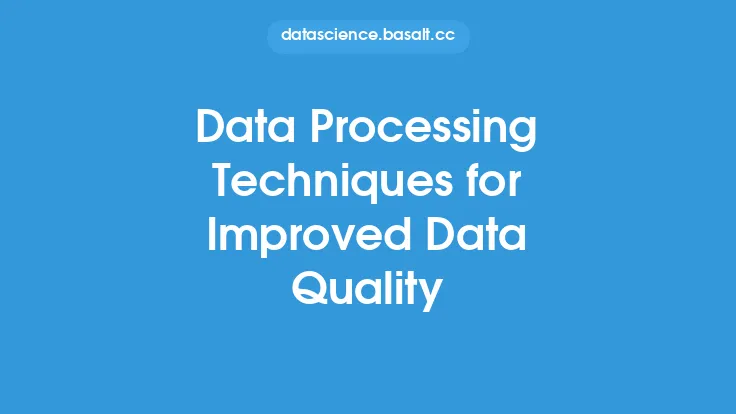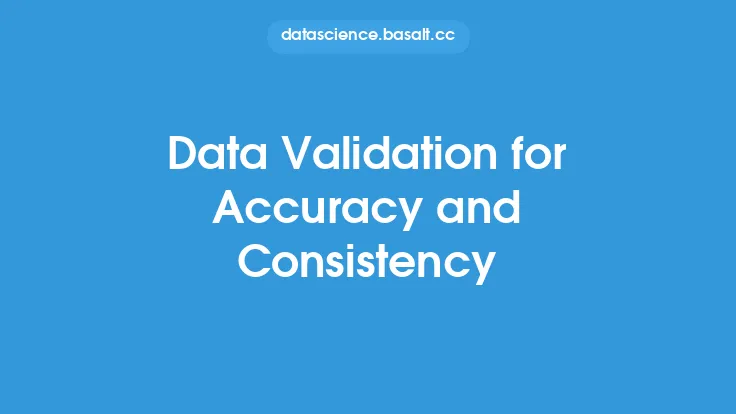Data normalization is a crucial step in the data cleaning process, ensuring that data is consistent and reliable for analysis. Normalization techniques help to transform raw data into a standardized format, making it easier to compare and analyze. In this article, we will delve into the world of data normalization, exploring the various techniques and methods used to achieve consistency in datasets.
Introduction to Data Normalization
Data normalization is the process of organizing and formatting data to ensure that it is consistent and accurate. This involves transforming raw data into a standardized format, which enables efficient analysis and comparison. Normalization techniques help to reduce errors, improve data quality, and increase the reliability of analysis results. By applying data normalization techniques, data analysts can ensure that their data is consistent, complete, and accurate, which is essential for making informed decisions.
Types of Data Normalization
There are several types of data normalization techniques, each with its own strengths and weaknesses. Some of the most common techniques include:
- Min-Max Scaling: This technique involves scaling numeric data to a common range, usually between 0 and 1, to prevent differences in scales from affecting analysis results.
- Z-Score Normalization: This technique involves transforming data into a standard normal distribution, with a mean of 0 and a standard deviation of 1, to reduce the impact of extreme values.
- Log Transformation: This technique involves transforming data using the logarithmic function to reduce skewness and make data more normally distributed.
- Standardization: This technique involves transforming data to have a mean of 0 and a standard deviation of 1, which helps to reduce the impact of differences in scales.
Data Normalization Techniques for Categorical Data
Categorical data, such as text or categorical variables, requires special handling during the normalization process. Some common techniques for normalizing categorical data include:
- Label Encoding: This technique involves assigning a unique numeric value to each category, which enables efficient analysis and comparison.
- One-Hot Encoding: This technique involves creating a binary vector for each category, where a 1 indicates the presence of the category and a 0 indicates its absence.
- Hashing: This technique involves using a hash function to transform categorical data into a numeric format, which enables efficient analysis and comparison.
Data Normalization Techniques for Numeric Data
Numeric data, such as integers or floating-point numbers, requires different handling during the normalization process. Some common techniques for normalizing numeric data include:
- Scaling: This technique involves transforming numeric data to a common range, usually between 0 and 1, to prevent differences in scales from affecting analysis results.
- Centering: This technique involves transforming numeric data to have a mean of 0, which helps to reduce the impact of differences in scales.
- Robust Scaling: This technique involves transforming numeric data using the interquartile range (IQR), which helps to reduce the impact of extreme values.
Data Normalization Techniques for Date and Time Data
Date and time data, such as timestamps or dates, requires special handling during the normalization process. Some common techniques for normalizing date and time data include:
- Date Formatting: This technique involves transforming date and time data into a standard format, such as YYYY-MM-DD, to enable efficient analysis and comparison.
- Time Zone Conversion: This technique involves converting date and time data to a standard time zone, such as UTC, to enable efficient analysis and comparison.
- Timestamp Conversion: This technique involves converting date and time data into a numeric format, such as seconds or milliseconds, to enable efficient analysis and comparison.
Best Practices for Data Normalization
To ensure that data normalization is effective, it is essential to follow best practices. Some of the most important best practices include:
- Understand the Data: Before normalizing data, it is essential to understand the distribution, scale, and format of the data.
- Choose the Right Technique: Different normalization techniques are suited to different types of data, so it is essential to choose the right technique for the data.
- Validate the Results: After normalizing data, it is essential to validate the results to ensure that the data is consistent and accurate.
- Document the Process: It is essential to document the normalization process, including the techniques used and the results obtained, to enable reproducibility and transparency.
Common Challenges in Data Normalization
Data normalization can be challenging, especially when dealing with large and complex datasets. Some of the most common challenges include:
- Handling Missing Values: Missing values can make it difficult to normalize data, as they can affect the distribution and scale of the data.
- Handling Outliers: Outliers can make it difficult to normalize data, as they can affect the distribution and scale of the data.
- Handling Non-Standard Data: Non-standard data, such as text or categorical variables, can make it difficult to normalize data, as they require special handling.
- Handling Large Datasets: Large datasets can make it difficult to normalize data, as they can be computationally intensive and require significant resources.
Conclusion
Data normalization is a crucial step in the data cleaning process, ensuring that data is consistent and reliable for analysis. By understanding the different types of data normalization techniques, including min-max scaling, z-score normalization, log transformation, and standardization, data analysts can ensure that their data is consistent, complete, and accurate. By following best practices, such as understanding the data, choosing the right technique, validating the results, and documenting the process, data analysts can ensure that their data is normalized effectively. By being aware of the common challenges in data normalization, such as handling missing values, handling outliers, handling non-standard data, and handling large datasets, data analysts can take steps to overcome these challenges and ensure that their data is normalized effectively.





